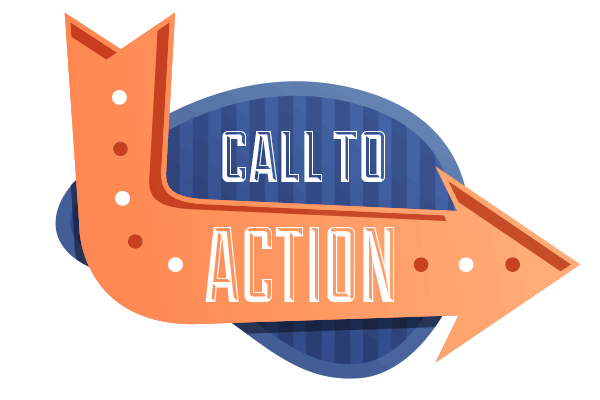The process of creating a compelling content piece is quite extensive. Quality content ranks high both in your reader’s eye but also on search engines. Making sure that every single sentence either reveals something about a service or product and advances an action, is quite a laborious task. It should be informative and engaging at the same time. Here’s 8 Do’s and Don’ts that will change the way you compose a quality piece of website content.
Do’s
1. Establish a Goal For the Text
The key to establishing clear goals for each of your content pieces is by asking the right questions.
For example:
- As a brand, always ask yourself, “what purpose do you aim to conquer with this piece of written content?”
Write down these projected goals in order. Hopefully, you have a list of a number of different purposes.
Make sure all of the content purposes are simple.
For example:
- To earn links,
- To sell product
- To gain subscriptions
- To drive social engagement,
- To inform and educate the audience
- To rank higher on the SERPs
- To incite call-to-action
After writing down these simple purposes, set plans to achieve them through your content.

2. Start Outlining all Your Text
Understand that outlining is a particularly necessary part of the process of forming long-form texts.
- Architecture – Your text is only as strong as its content architecture. Even before you start writing a word of your copy, make sure to structure and outline your content’s strategy.
- Organize Ideas – Start by organizing a small list of ideas and further segregate these ideas, working through each of them one by one.
- Focus on Flow – After you have all the ideas in place, pay attention to the flow of the content. It’s all about the right flow in the organization of information for the readers.
- Begin Drafting – Begin the process of drafting your piece of content.
3. Listicles and Use of Headers Get More Readability
Long-form texts can be especially hard to follow. The fast pace at which technology is shaping as well as changing the ways in which readers consume information has become more rapid.
According to a study conducted by Microsoft Canada, on the topic of attention spans, research shows that an average human attention span is anywhere between 9 to 12 seconds.
With that in mind, here are the basics of how to use listicles, bullet points, and headers to keep your readers’ attention intact.
- Focus on Brevity – Brevity takes content a long way by being concise and sharp in its delivery of the said information. It is truly the hallmark of great writing. For example: Forming short, concise, and crisp tweets on twitter is a form of brevity that is now more familiar with everyone.
- Promise Your Audience – using promise words in your bullet points, listicles, and headers, keep your readers hooked in for a legitimate solution to their queries. Doing so can keep the attention of your readers. Make sure to deliver on those promises, if not, it may ruin your credibility as a subject matter expert.
For example: - The Secrets to Writing an Exceptional Copy (the use of the word ‘secrets,’ promises exceptional copywriting skills)
- 18 Simple Tricks to Ace Your Content Writing Game. (the use of the words – tricks to ace promises on delivering tricks to change your content writing game.
4. Use CTAs
A CTA ( Call-to-Action) content prompts a user to guide the reader towards your text’s goal conversion. It is usually an inviting button, link, image, form, or some sort of graphic that invokes the user’s participation.
Without a CTA at the end of a great piece of content, the content falls flat and becomes less effective in converting these readers into consumers.
How long should a Call to Action Be?
- Make sure that the CTA is no longer than a sentence.
- Make it clickable buttons
- They should be short & concise
- Pay attention to its placement to formatting.
For Example:
Good CTA – Start Free Trial Today!
Bad CTA – Try our exclusive, limited time, free trials today!
A good CTA always encourages action, is short, direct, punchy, and creates a sense of urgency.

5. Tonality of Communication
Tonality is the way one’s voice sounds when one talks or reads something. As irrelevant as this point may seem, it’s actually quite the opposite.
Dr. Albert Mehrabian’s study on Communication Theory shows that tonality accounts for 38% of communication, whereas words account to 7%. Effective written communication through one’s words is only possible if the right tonality of communication is asserted into the content. While writing, a change of tonality within the text, can establish interest and make the content stand out because of a conversational tone.
- Shuffle between question, statement, request, and command, to create a variety of conversational text.
6. Write Your Headline/Title Last
Writing headlines/titles should be the last task on your list. Last doesn’t equate as least important. In fact, last here indicates that it’s of primary importance.
- The clear cut purpose of a title is to describe as well as entice the reader to read the entire text. As the title is a recapitulation of the entire text, it should be the last task to attempt.
- Crafting a great headline title should not be the first thing you think about while sitting down to write a long-form text.
- Keep it creative, catchy, and irresistible to read.
How to Create Catchy Headlines
- Give numbers to Quantify the Number of Takeaways
For example – 18 Do’s and Don’ts to Write Website Content - Make use of emotional appeals to describe problems faced by readers
For example – Effortless Ways to Ace Writing Website Content - Use a rationale to indicate solutions to problems faced by readers
For example – Secrets to Write Best Website Content
Or, Facts You Need to Write Amazing Website Content - Use Triggers Words such as What, When, Why & How in order to pique interest
For example – What You Should Know About Creating Great Website Content - Make use of an Audacious Promises.
For example – Dare you to try these tactics to Ace Website Content Writing
If you aren’t familiar with using any of these tactics. Use the simple formula,
Number or Trigger Word + An Adjective + Keyword + Promise
Use this formula, and you can formulate Great Headlines.
7. Do a Thorough Review of Your Completed page of Content
This point actually goes along with the tonality of communication mentioned above. Apart from the tonality of the entire content, make sure that after completion of the text, you look for any missing information or errors, and correct them.
*Hot Tip – Read the content out loud. Doing so will help you assess if the tonality is right and if the text sounds the way it’s intended. This helps one correct the flaws in the structure of the sentence and even common grammatical errors.
8. Keep Updating Your Content
Having outdated content can seem not only boring but even reflects poorly on your business acumen. It can also heavily affect the overall content’s bounce rate, ensuring that readers navigate away from the site after viewing it for a short while.
- Creates Hyperlinks – If it’s impossible to edit a pre-written content, don’t be afraid to venture into writing a series of blog posts. Doing this will not only help with creating clickable hyperlinks connecting various blog posts, but also give a timeline of evolving changes and updates within the topic in question.
- Establish Credibility and Rapport – Updating your content creates credibility among your readers and builds on trusting rapport between reader and writer.
Don’ts

1. Don’t at any cost, Plagiarize
Writers are inspired artists, but there is a very fine line between being inspired in your written work and plagiarizing. Take inspiration from other writers but refrain from plagiarizing at all costs.
- Keep your temptations at bay – Copying content from other bodies of written work can directly result in your work being flagged and penalized.
- Come up with original content – It sets you apart and gives the content your own sound voice of reason, intellect, and emotion – making your written work flavourful.

2. Don’t Use Long Sentences
Example of a Long Sentence – The ability to write longer, complex sentences with multiple syllable words in huge paragraphs can definitely make you feel well versed with language, and smarter on the whole, just as this particular sentence does.
Same sentence is broken into multiple smaller ones to make it reader-friendly!
Example of a Short Sentence – Longer sentences are made up of complex sentences. They make use of multiple syllable words and make paragraphs huge. They make one seem well versed with the language. Some even feel smarter using longer sentences.
They are understandable by any average person and more comprehensible. Period.
3. Don’t Use Bad Anchor Text
If there’s a clickable link inserted into your text, don’t use a bad anchor text like – Click Here! Use an anchor text that is search engine optimized, and will boost the website’s ranking in search results. Use a creative, relevant, descriptive, and inviting anchor text, to aid with the CTA.
For example –
Don’t Use: Click for more content solutions.
Use this: Webspero offers a range of content creation solution services.
4. Don’t Annoy your Target Audience with Repetitive Content
Put a long hiatus on creating repetitive content. In an attempt to fulfill the SEO goals, keyword bombarding continually in a variety of blog website content posts, don’t stale out your content.
- Don’t Repeat Frequently – Be sure that your website’s visitors don’t want to repetitively read about the same concepts over and over again.
For example:
- 1st Post – 10 Ways to Write Amazing Website Content
- 2nd Post – Dare you to try these 3 Ways to Formulate Exceptional Content for Websites
- 3rd Post – Don’t fail to Try these Tactics to Submit Great Website Content
These are all repetitive headlines, titles, and content. Your readers will get bored with repetitive content and fall out from visiting your website again.
- Teach New Concepts – They want to learn newer concepts each time. They want to add on the knowledge that they’ve gained over time.
5. Don’t Use Images without a legal right to use them
- Don’t use random images – Taking any random image from the internet without seeking permission from the original owner of the picture, graphic, or purchasing it, can result in lawsuits. Refrain from using random images.
- Stock Images – Instead, explore many free stock image sites, subscribe to them, and use the free versions of these stock images for your personal or business use. Doing this will keep you safe from a lawsuit.
6. Don’t Overdo Graphic and Images
Usage of graphics and images on websites is a great way to give minor breaks to the text and still be informative ways in which you can educate your audience. However, a website blog page is no Christmas tree that requires too many decorations.
- Overdoing the use of graphics and images can make the page look tacky.
- It can also result in the page loading slower, and that being the reason readers divert away from the site.
- It can be discouraging for potential customers, and they may never revisit your site again, due to the slow loading speed.
7. Don’t Sound Overly Promotional
What makes great quality content? Having the right balance of promotional and non-promotional text makes great content. Sure, the intent of your blog post might be to instigate the purchase of your products and services. However, an overly promotional piece can down the value of your expertise and make it seem like an advertisement instead.
- Make the Piece Informative – The right way to promote your expertise is by establishing to your target audience the valuable information that you are able to share, keeping them interested in the services you provide.

8. Don’t Forget Your Target Audiences
Lastly, one major aspect of creating an exceptional piece of content is by swerving all focus towards your target audience. Always keep in mind that your brand, and you as a subject matter expert, might know the in’s and out’s of the service or product offered. At the same time, keep in mind that potential customers might be far less informed.
Defining your target audience is one of the most important aspects of your content marketing strategies.
Here’s how you can define your target audience.
- Compline data on your existing customers/readers – this includes their age, location, language, spending patterns and power, interests, and the stage of life.
- Go through your Website and Social Media Analytics – Target audience research is key to finding out trends and filling the gaps in your customer analysis. You can study your target audience by going through social media and website analytics.
- Keep a check on the competition – After finding out all the data about your target audience, have a look at what your competitor is doing. Follow through their audience engagement to narrow down what’s working and what’s not.
- Know the value of your own service/product – In light of all the data collected and defined above, make sure to know how distinctive your service/product is, and list out your features.
- Define a target market statement – Everything that you’ve discovered in the last few points defines your target audience. All you now have to do is, define your target audience in one simple audience.
Following these makes certain that your website’s content meets the standard of your readers’ knowledge on a particular subject. Understanding fully-well the need for crispy, concise, and precise website content is not everyone’s piece of cake.
At Webspero, we specialize in generating content that drives up the sales and services of each of our clients. Get in contact with us & hire us for your content needs such as Ad Copywriting, guest post writing, blog management, article writing, etc. – today!
